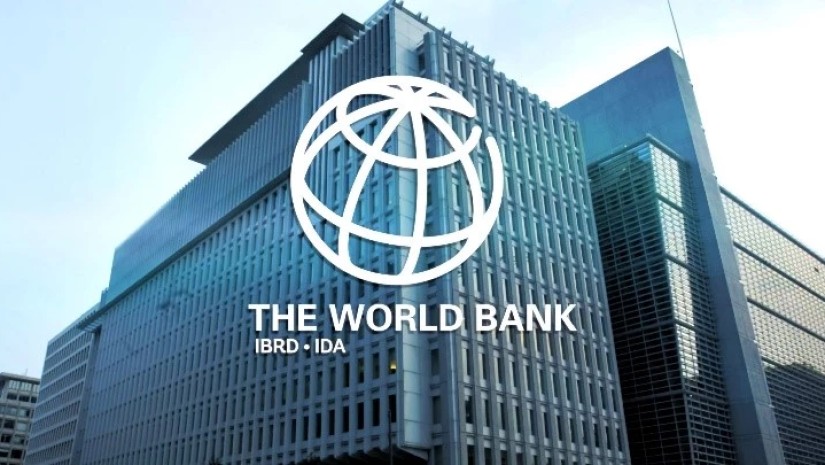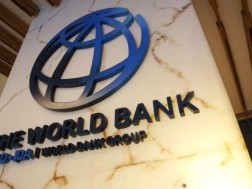The World Bank (WB) published the Georgia Monthly Update. According to the document, The economy expanded by 5.9 percent (yoy) in November 2023, compared to 6.2 percent (yoy) in October.
Cumulative growth in the first 11 months of 2023 reached 6.9 percent. Growth in November was driven by strong performance in finance, insurance, construction, and trade. There was a fall in manufacturing, energy, and transportation. Total turnover of VAT taxpayers rose 2.6 percent (yoy) in November in nominal terms, whereas the number of new business openings fell 20.5 percent (yoy) due to fewer non-resident registrations. Quarterly statistics show that, on the demand side, growth in Q3 2023 was driven by continued robust performance in investments (up 32 percent) and recovery in private consumption (up 3 percent).
Inflation increased marginally in December 2023, driven by higher food prices. Inflation increased 0.1 percent (yoy) in December due to a 0.9 percent increase in the price of food (contributing 0.3 ppt to inflation), while other categories recorded a fall. Within the food category, the increase primarily resulted from higher prices for fruits and vegetables as well as dairy products. Annual end-of period inflation remained low at 0.4 percent, while average inflation in 2023 reached 2.5 percent. Given low inflation, the monetary committee of the NBG cut its policy rate 0.5 ppt in December, to 9.5 percent. The GEL appreciated 0.9 percent (mom, eop) against the USD in December, and 0.1 percent against the EUR. Overall, the GEL has appreciated 11 percent on average against the USD since the onset of the war in Ukraine.
Recently released data indicate that the current account balance was positive in Q3 2023. In Q3 2023, the current account surplus was 0.5 percent of projected GDP, down from 1.3 percent in Q3 2022. The surplus was driven by strong service exports, particularly from tourism. The cumulative deficit for the first three quarters of 2023 decreased to 1.9 percent of GDP, compared to 2.6 percent in the same period in 2022. Despite a 7 percent (yoy) fall, transfers from non-resident workers and employee compensation totaled USD 1.1 billion, contributing significantly to the country's externa income. Financing resources in Q3 came mostly from FDI (0.8 percent of GDP), while portfolio investments recorded net outflows due to the excess resources of commercial banks from large amounts of deposits being placed in foreign banks.
The trade deficit, at 43 percent of total trade turnover, narrowed in December 2023. Exports fell 7.4 percent (yoy), while a 11.2 percent (yoy) contraction in imports led to a 13.5 percent (yoy) fall in the trade deficit in December. Overall, in 2023 the cumulative trade deficit widened 17.4 percent, mostly driven by stronger imports. Available disaggregated statistics for November suggest that export growth continued to be driven by the re-export of used cars (up 82 percent, yoy), mostly to the Kyrgyz Republic, Kazakhstan, and Azerbaijan. Meanwhile, other traditional exports, such as copper (down 77 percent, yoy), fertilizers (down 62 percent, yoy) and ferroalloy (down 29 percent, yoy) contributed to a 34 percent (yoy) fall in domestically produced exports in November. This was driven by falling prices (in the case of fertilizers) and other factors. Import growth was driven by demand for pharmaceuticals and heavy machinery, whereas imports of copper concentrates and cars fell. Remittances stabilized in November compared to October but declined 44 percent (yoy).
The fiscal deficit in November 2023 narrowed against last year. The deficit amounted 0.4 percent of projected GDP in November and 1.8 percent for the first 11 months of 2023. In November, general government tax collection fell 3.6 percent (yoy) in nominal terms, while current spending
remained almost constant (yoy), and capital spending fell about 10 percent (yoy). The fall in current spending was mostly driven by subsidies and goods and services (down 46 percent and 6 percent, respectively), while spending for social provision and interest payments rose 22 percent and 14 percent, respectively. At end November, public debt was estimated at 40 percent of 2023 projected GDP, slightly up from end-2022 (equivalent to 39.7 percent of GDP).
The state budget law 2024 was approved at endDecember 2023. The Government has committed to pursuing gradual consolidation in the medium-term to rebuild fiscal buffers and mitigate possible shocks. It aims to reduce the deficit and public debt to 2.5 percent and 38.1 percent of GDP, respectively, in 2024, from an estimated 2.8 percent and 38.4 percent of GDP, respectively, in 2023. Current expenses are set to increase to 23.3 percent of GDP, up from 22.5 percent in 2023. At the same time, public investment spending is projected to decline by almost 1 ppt while remaining significant at around 7.9 percent of GDP in 2024. Revenue and tax collection are projected to continue their soli performance in 2024, reaching 28.4 percent and 25.6 percent of GDP, respectively. The increase with respect to 2023 is expected to be driven by improved administration (0.2 ppt of GDP), additional profit tax revenues from the financial sector (0.5 ppt of GDP), and higher taxation on gambling (0.5 ppt of GDP).















